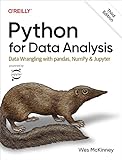To count duplicates in pandas, you can use the duplicated() function along with the sum() function. First, use the duplicated() function to create a boolean mask indicating which rows are duplicates. Then, use the sum() function to count the number of True values in the mask, which represent the duplicates. This will give you the total count of duplicates in your pandas DataFrame.
What is the importance of handling duplicate values in pandas?
Handling duplicate values in pandas is important for several reasons:
- Data accuracy: Duplicate values can skew data analysis results and lead to inaccurate conclusions. By removing or handling duplicate values properly, data accuracy is ensured.
- Data consistency: Duplicate values can create inconsistencies in the dataset and make it difficult to work with. Handling duplicates helps maintain data consistency and makes the dataset more reliable.
- Efficiency: Duplicate values can slow down data processing and analysis. By removing duplicates, the efficiency of data operations in pandas can be improved.
- Data quality: Duplicate values can affect the overall quality of the dataset. Handling duplicates helps improve data quality and ensures that the dataset is reliable and trustworthy.
- Preventing errors: Handling duplicate values helps prevent errors in data analysis and reporting. By identifying and removing duplicates, potential errors can be minimized and data integrity can be preserved.
How to count the occurrences of each duplicate value in a pandas DataFrame?
You can count the occurrences of each duplicate value in a pandas DataFrame using the value_counts() method. Here's an example:
1 2 3 4 5 6 7 8 9 10 |
import pandas as pd # Create a sample DataFrame data = {'A': [1, 2, 2, 3, 3, 3, 4, 4, 4, 4]} df = pd.DataFrame(data) # Count the occurrences of each duplicate value in column 'A' counts = df['A'].value_counts() print(counts) |
This will output:
1 2 3 4 5 |
4 4 3 3 2 2 1 1 Name: A, dtype: int64 |
In this example, the value_counts() method is used to count the occurrences of each duplicate value in column 'A' of the DataFrame df. The resulting series counts shows the counts of each unique value in column 'A'.
How to handle duplicate values in pandas?
To handle duplicate values in a pandas DataFrame, you can use the drop_duplicates method or the duplicated method.
- Drop duplicate rows: You can drop duplicate rows from a DataFrame by using the drop_duplicates method, which will remove rows that are exact duplicates of each other. By default, the first occurrence of the duplicate row is kept, and subsequent duplicates are dropped.
1
|
df.drop_duplicates()
|
You can also specify columns to check for duplicates, as well as how to handle duplicates using the keep parameter:
1
|
df.drop_duplicates(subset=['col1', 'col2'], keep='first')
|
- Find duplicate rows: You can also check for duplicate rows in a DataFrame using the duplicated method, which returns a boolean Series indicating whether each row is a duplicate of a previous row.
1
|
df.duplicated()
|
You can specify columns to check for duplicates, just like with drop_duplicates:
1
|
df.duplicated(subset=['col1', 'col2'])
|
By default, duplicated marks the first occurrence of a duplicate as False and subsequent duplicates as True. You can also pass the keep parameter to control this behavior:
1
|
df.duplicated(subset=['col1', 'col2'], keep='last')
|
By using these methods, you can easily handle duplicate values in a pandas DataFrame.
How to filter out duplicates in pandas?
To filter out duplicates in a pandas DataFrame, you can use the drop_duplicates() method.
Here is an example code snippet to demonstrate how to filter out duplicates in a pandas DataFrame:
1 2 3 4 5 6 7 8 9 10 11 |
import pandas as pd # Create a sample DataFrame with duplicates data = {'A': [1, 2, 3, 1, 2, 3], 'B': ['foo', 'bar', 'baz', 'foo', 'bar', 'baz']} df = pd.DataFrame(data) # Filter out duplicates based on column 'A' df_filtered = df.drop_duplicates(subset='A') print(df_filtered) |
In this example, the drop_duplicates() method is used with the subset parameter to specify the column to check for duplicates. The result will be a new DataFrame with only the unique values in the specified column.
How to remove duplicates in pandas?
You can remove duplicates in a pandas DataFrame by using the drop_duplicates() function. Here is an example:
1 2 3 4 5 6 7 8 9 10 11 |
import pandas as pd # Create a sample DataFrame with duplicates data = {'A': [1, 2, 2, 3, 4], 'B': ['a', 'b', 'b', 'c', 'd']} df = pd.DataFrame(data) # Remove duplicates based on all columns df_no_duplicates = df.drop_duplicates() print(df_no_duplicates) |
This will remove the duplicates from the DataFrame based on all columns. If you want to remove duplicates based on specific columns, you can specify them using the subset parameter:
1 2 3 4 |
# Remove duplicates based on column A only df_no_duplicates = df.drop_duplicates(subset=['A']) print(df_no_duplicates) |
This will remove duplicates based on the 'A' column only.









